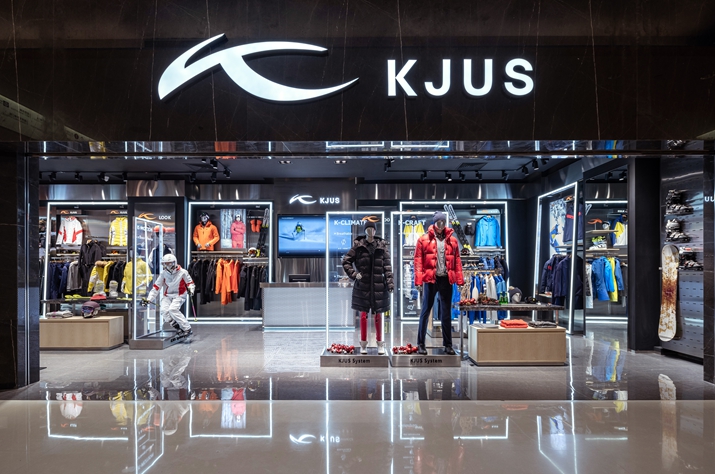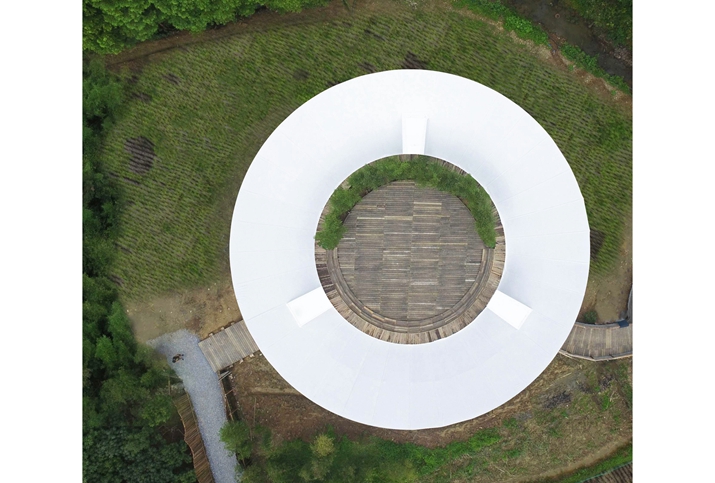| Voice |
| Chasing design dreams in Beijing | |
|
|
|
A UNESCO-designated City of Design since 2012, Beijing is known for its vibrant design sector. One of Beijing's pillar industries, the sector employs nearly 250,000 people and has a total value estimated at over 160 billion yuan ($24 billion). China's capital also attracts many international creatives. Several of them shared with Beijing Review reporter Tao Xing their reasons for venturing out to China in the first place and how they observe the nation's design market today.
 A store of Kjus, a Swiss luxury sportswear brand, in Beijing, featuring design concept developed by 5 Star Plus Retail Design (COURTESY PHOTO)
Barbara Seidelmann, Managing Director of 5 Star Plus Retail Design: 5 Star Plus Retail Design is an international commercial interior design company developing concepts for stores, restaurants, and exhibition stands. I am from Austria and lead an international team of Chinese, European and American professionals at the company. We opened as a retail design firm in China nine years ago. This is a country with a lot of dynamic energy. Cities and the building landscape are less established than in Europe or the U.S., allowing us to embark on architectural design projects from scratch. In addition, the sheer size of the market and its consumers are very attractive features for many brands willing to invest in trendsetting large-scale store designs and new creative concepts here. The market has developed incredibly fast and today there is a much bigger number of international and local architecture and design firms focusing on the retail market. It is the speed of the market, as well as its potential, that never stops to impress. It is important to understand that China is a huge country with its culture stretching across rich and diverse regions. North and south are very different, as are the ethnic backgrounds of people. When we design commercial architecture, it is often about perfectly representing the brand and what it stands for; therefore, the positioning and style are usually aligned globally. There is, however, an increasing trend that goes toward incorporating local elements in architecture, to make it more context-specific. In China, each local store or restaurant design becomes unique and relates to the local culture and people. There is, on the other side, also an increasing number of companies that proudly incorporate Chinese elements into their brand design, which is great to see. We also help international enterprises landing in China. Kjus, for example, is a Swiss luxury sportswear brand founded by Norwegian ski champion Lasse Kjus. We developed a design concept for the brand's China stores that is completely different from its international stores and better suits the palate of Chinese consumers. To showcase the brand's positioning and technical quality of products, our store design gives off a cool vibe and emphasizes hi-tech elements. Design per definition has two aspects to be fulfilled, which are functionality and aesthetics. When we design, it is a precondition that we understand the end-user. I believe that China's consumers are very confident and "global" citizens. This means that designers should not create for a Chinese person, but rather focus on developing a concept that is state of the art, better than anything out there already.  Micr-O, a rural learning center designed by Superimpose Architecture in Hangzhou, Zhejiang Province (COURTESY PHOTO)
Ruben Bergambagt, Carolyn Leung, Ben de Lange, founders of Superimpose Architecture: Superimpose Architecture is a Sino-Dutch design practice based in Beijing, Rotterdam and Hong Kong. With our team of innovative designers, we create meaningful and sustainable spaces through architecture, interior plus exhibition designs. After working in Europe for several years, China intrigued us because it features a very different architectural scene: the magnitude and speed of its urban development, project types and scale are very different from those in the West. As foreign architects, these factors are very challenging and exciting, and help us to expand our experience and widen our horizon. China's design market is fast-paced and intangible. It is vast and we are constantly designing for different cities with different subcultures. This challenged us to make our design methodology more adaptable to different sceneries, project typologies and fast-changing situations. Over the last few years, we've seen a shift in focus, homing in on design quality and sustainability. We hope this change will continue and, moreover, can be applied to people's immediate living spaces. In order to really understand Chinese culture, it's important to look well beyond its first appearance. For each project we take on, we consider the local culture with its traditions and try to reflect on or respond to these through our designs. Our company strategy is to not copy literal Chinese physical elements and implement them into our designs, but rather to emphasize how cultures work, how people meet and socialize, and how to apply local craftsmen techniques. We stand for creating design that is unique and solely meant for its specific context. Localism is what gives a place its unique identity. For example, in order to present Sinicism, we carefully analyze the projects' location and interpret valuable cultural or contextual elements that we want to integrate into the design. At the same time, Superimpose integrates international insights on how to improve this environment. We call our approach "Glocal," a notion in which both the local and global parts are equally important.  A poster of the 28th Golden Rooster Awards designed by LAVA Beijing (COURTESY PHOTO)
Céline Lamée, Creative Director and Founder of LAVA Beijing: LAVA Beijing is an international graphic design studio. We create graphics for corporate and cultural clients, big and small. We stand for a conceptual and hands-on approach to design. Working in Amsterdam for six years I felt we were in a continuous battle with other design studios only to catch a handful of interesting projects. These projects did not have much budget either. So you think up a whole world of ideas, but end up only making a sticker and a roll-up banner in the end. When I had the chance to come to Beijing to do a workshop, I immediately loved the chaos and energy. I met a fun group of creatives and felt at home right away. I also encountered some people who seemed desperately in need of a graphic designer, so I decided to stay and try my luck. I'm still surprised by the speed at which decisions are made and projects can come to life in China. The ease of meeting new people and the variety of possible projects you come across here still dazzle me. I think the way clients talk about design has matured, fast. While time and money seemed to be the main motives when talking design, now concept and story seem to be a generally embraced value with our clientele. In many of our designs we take our inspiration from stories we discover within the context of Chinese culture. We always make sure we treat these in a contemporary way to fully see what accepted symbols and cultural ideas mean in today's society when stripped of all historical layers. We keep our eyes firmly on modern-day Chinese culture, on the streets and all around us. In 2019, we were asked to design the poster for the Golden Rooster Film Awards, China's national film awards. We worked with the China Film Association and challenged them into crafting something more abstract than ever before. I'm quite proud of that. Copyedited by Elsbeth van Paridon Comments to taoxing@bjreview.com |
|
||||||||||||||||||||||||||||
|
